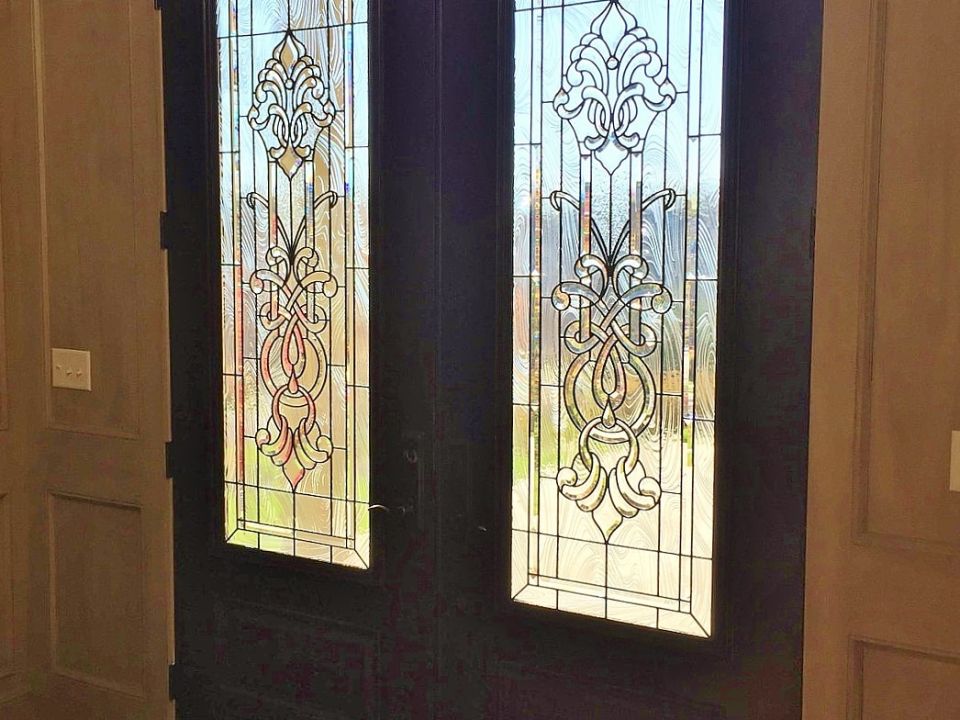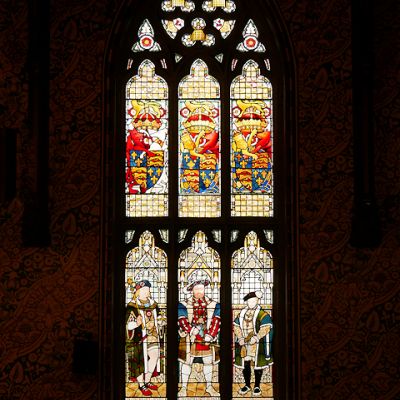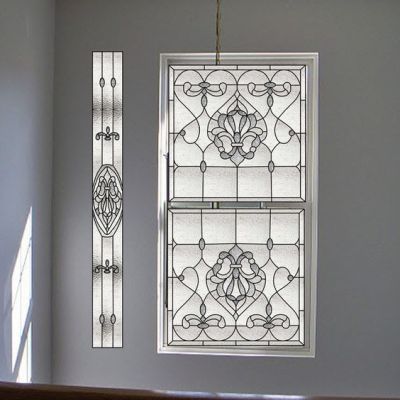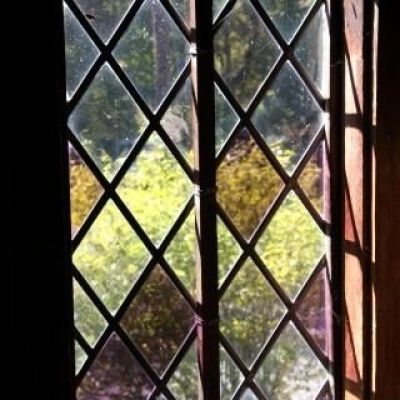Heritage Hues: Stained Glass Doors Reflecting Timeless Artistry

Step through a grand entrance adorned with stained glass, and you're transported to a world of vibrant colors and intricate artistry. Sunlight streams through, casting a kaleidoscope of hues that dance on the walls and floor. These luminous portals aren't just beautiful entryways; they're windows into the rich history and enduring appeal of stained glass.
This blog post delves into the captivating world of stained glass doors, exploring their historical roots, diverse design styles, and the timeless artistry they embody. We'll journey through the centuries, uncovering the techniques used to create these luminous masterpieces and discover how they can elevate the aesthetics and functionality of your space.
A Legacy of Light: Tracing the History of Stained Glass Doors
The origins of stained glass can be traced back to ancient civilizations, but it wasn't until the Middle Ages that it flourished in Europe. Grand cathedrals became canvases for magnificent stained glass windows, depicting religious stories and figures. Stained glass doors also emerged during this period, often serving as a practical and artistic barrier for churches and castles.
-
Grand Entrances: These doors announced the arrival at a place of importance and reflected the status of the residents. They might feature family crests, heraldic symbols, or religious scenes meticulously crafted from vibrant colored glass pieces.
-
Evolving Techniques: Stained glass techniques continued to evolve through the centuries. The Renaissance saw a focus on realism and perspective in the designs, while the Gothic period favored bold colors and dramatic scenes.
A Journey Through Styles: Heritage Hues Reflected in Design
The beauty of stained glass doors lies in their versatility. Here's a glimpse into some captivating design styles that showcase the timeless artistry of this medium:
-
Medieval: Stained glass doors from this period often depict religious figures, biblical stories, or heraldic emblems. Imagine a design featuring a saint rendered in vibrant blues and reds, surrounded by intricate geometric borders in deep amber and emerald green.
-
Victorian: The Victorian era saw a surge in popularity for stained glass doors in homes. These doors often feature romantic themes, with floral motifs, nature scenes, or scenes inspired by literature meticulously crafted from a palette of soft pinks, greens, and blues.
-
Art Deco: Characterized by geometric shapes, bold colors, and a sense of symmetry, Art Deco stained glass doors are perfect for adding a touch of glamour and sophistication to your entryway. Imagine a sunburst motif meticulously crafted from amber, ruby red, and emerald green colored glass pieces, creating a sense of grandeur and intricate beauty.
-
Mission Style: Simple geometric patterns and muted colors define Mission Style stained glass doors. These doors complement Craftsman or Arts and Crafts style homes with their clean lines and natural materials. A Mission Style design might feature a geometric motif meticulously crafted from amber and brown glass pieces, creating a calming and visually appealing entryway.
-
Modern: Modern stained glass takes inspiration from contemporary art, often featuring abstract designs and vibrant color palettes. These doors can add a unique touch and a bold statement to your entryway. Imagine a swirling abstract design meticulously crafted from blue and purple glass pieces, creating a captivating and eye-catching entrance.
Beyond Beauty: The Enduring Appeal of Stained Glass Doors
Stained glass doors offer more than just visual appeal. Let's explore some of the ways they reflect timeless artistry and enhance a space:
-
Transforming Light: Stained glass filters and diffuses light, casting a warm and inviting glow that sets the mood for the space beyond. The specific colors used play a significant role; warm tones like amber or red create a cozy atmosphere, while cooler tones like blue or green evoke a sense of tranquility.
-
Privacy with a View: Stained glass obscures the view through the door, providing a degree of privacy for the interior while still allowing light to enter. This can be especially beneficial for entryways that open directly into living spaces or hallways.
-
A Focal Point of Beauty: A stained glass door becomes a stunning focal point for your entryway, drawing the eye and sparking conversation. The intricate artistry and vibrant colors create a captivating first impression and set the tone for the rest of the space.
-
Evoking Emotions: The colors, patterns, and themes depicted in the stained glass can evoke different emotions. Nature-inspired designs can create a sense of peace and tranquility, while abstract patterns might spark curiosity and intrigue.
-
A Touch of History: Stained glass doors, particularly those with historical themes or motifs, can imbue a space with a sense of history and tradition. They can connect your home or building to a rich artistic heritage.
Enhancing Your Space with Timeless Artistry: Selecting the Perfect Stained Glass Door
With so many captivating design styles and the enduring appeal of stained glass artistry, selecting the perfect door for your space can be an exciting, yet daunting, task. Here are some tips to guide you:
-
Consider Your Architectural Style: The design of your stained glass door should complement the overall architectural style of your home or building. Medieval-inspired designs might suit a Gothic Revival home, while Art Deco styles might enhance a modern townhouse.
-
Light Transmission Needs: Stained glass naturally reduces light transmission. Consider the existing light levels in your entryway and choose a design that allows for sufficient natural light to enter, especially if the door opens into a darker space.
-
Privacy Requirements: The amount of privacy offered by the stained glass door will depend on the design and the opacity of the glass used. Consider your privacy needs for your entryway and choose a design accordingly.
-
Budget: Handcrafted stained glass doors with intricate designs can be expensive. Consider prefabricated stained glass panels or simpler designs if budget is a concern.
-
Personal Taste and Inspiration: Ultimately, the design of your stained glass door should reflect your personal taste and complement your existing décor. Explore different styles, colors, and themes, and find inspiration from historical sites, architectural magazines, or online portfolios of stained glass artists.
Conclusion
Stained glass doors are more than just functional entryways; they are luminous portals that reflect timeless artistry and transform spaces with captivating beauty. From the rich history and diverse design styles to the ability to manipulate light and evoke emotions, stained glass doors elevate both the aesthetics and functionality of your space.
By understanding the historical roots, design possibilities, and selection process, you can choose a stained glass door that complements your space and reflects your personal taste. Imagine stepping through your entryway, bathed in the warm glow of stained glass artistry, a captivating welcome that connects you to a rich artistic heritage and creates a lasting first impression. So, embrace the timeless allure of stained glass doors and let them transform your entryway into a portal that reflects the enduring beauty and artistry of this captivating medium.
FAQ's
Q: Are stained glass doors difficult to maintain?
A: Stained glass requires minimal maintenance. Regular dusting with a soft cloth and occasional cleaning with a gentle cleanser are typically sufficient. For valuable or antique stained glass doors, consult a professional for cleaning recommendations.
Q: Can stained glass doors be used in exterior applications?
A: While some stained glass can be used for exterior applications, it's crucial to choose materials specifically designed for outdoor use. These materials should be weather-resistant and able to withstand UV rays and temperature fluctuations. Consult with a stained glass artist or professional to discuss the suitability of exterior stained glass doors for your project.
Q: How much do stained glass doors cost?
A: The cost of a stained glass door can vary greatly depending on the size, complexity of the design, the artist's experience, and the materials used. Handcrafted stained glass doors can be expensive, while prefabricated panels or simpler designs offer a more budget-friendly option.
Looking to enhance your period home with bespoke craftsmanship? At Old English Doors, we specialise in creating custom wooden doors, windows, porches, and more - designed to reflect your home’s unique charm. Contact us today for a personalised quote and bring timeless elegance to your property.


